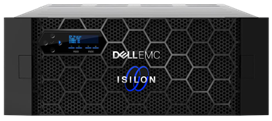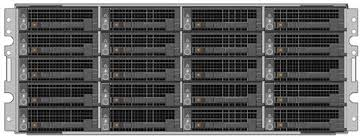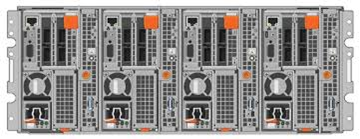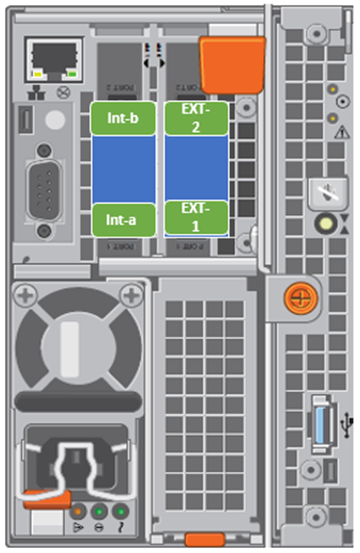In June 2020, Dell announced the Gen6.5 PowerScale model of the Isilon Scale-Out NAS and further changed the product brand name to PowerScale. Dell’s naming policy was also adopted for the Power family, such as PowerStore, PowerMax, and PowerFlex. The chassis uses a 1U PowerEdge R640 and is powered by OneFS 9.0 to deliver the same software functions as Isilon.
People often ask: What are the differences between PowerScale and Isilon? How are they different? In what scenarios can they be used? Here are the answers. In June 2020, Dell announced the Gen6.5 PowerScale model of the Isilon Scale-Out NAS and further changed the product brand name to PowerScale. Dell’s naming policy was also adopted for the Power family, such as PowerStore, PowerMax, and PowerFlex. The chassis uses a 1U PowerEdge R640 and is powered by OneFS 9.0 to deliver the same software functions as Isilon.
Difference in chassis, drives, and scalability

The F600 comes with 8 x 2.5” NVMe SSDs, the per-node raw capacity ranges from 7.68 TB to 61.44 TB



Differences in network interface


Front-end: 2 x 10 GbE (SFP+) or 2 x 25 GbE (SFP28) or 2 x 40 GbE (QSFP+)
Back-end: 2 x InfiniBand connections supporting QDR links or 2 x 10 GbE (SFP+) or 2 x 40GbE (QSFP+)


| PowerScale | Isilon | |
| Generation | Gen6.5 | Gen6 |
| Model | F200 、F600 | A200 、A2000 H400 、H500 、H600 、H5600 F800 、H810 |
| Chassis size | 1U | 4U |
| Nodes per chassis | 1 | 4 |
| Drive type |
SAS SSD
NVMe SSD
|
SATA HDD 、
SAS HDD
SAS SSD
|
| Drive size | 2.5” | 2.5” 、3.5” |
| Number of drives per node | 4~8 | 15~30 |
| Minimum number of nodes for first purchase | 3 | 4 |
| Number of nodes for each expansion | 1 | 2 |
| Online repeat data deletion and compression | F200 、F600 | F810 、H5600 |
| Front-end network | 10GbE 、25GbE 、100GbE | 10GbE 、25GbE 、40GbE |
| Back-end network | 10GbE 、25GbE 、100GbE | 10GbE 、40GbE 、InfiniBand |
The Isilon does not come in a high-density chassis like the PowerScale. When high performance applications without high capacity are required, the PowerScale F200 or F600 is recommended for Tier 1 hot data. After analysis, cold data can be tiered to Tier 2 using the Isilon A200 or A2000 with a higher density and higher capacity. Both the PowerScale and Isilon support scalability up to 252 nodes and 3.8 PB to ease worries about space.
The performance of the PowerScale is up to 15.80 million IOPS at a throughput of 945 GB/s, highly suitable for environments requiring performance, such as AI, data analysis, IoT, digital media, healthcare, and life science.
Suitable scenarios for PowerScale & Isilon
Basically, there are only hardware differences between the PowerScale and Isilon. Both are OneFS Scale-Out NAS with consistent functions. Through the above simple comparison, we hope that users can understand more about the PowerScale and Isilon. If you have any questions, please feel free to contact SYSAGE.

#SYSAGETechnology
#SYSAGE
#PowerScale
#Isilon
#F900
#Big Data Analysis
#Hadoop
#AI
#AI/ML/DL
#4K/8K
#Unstructured
#Scale-Out NAS